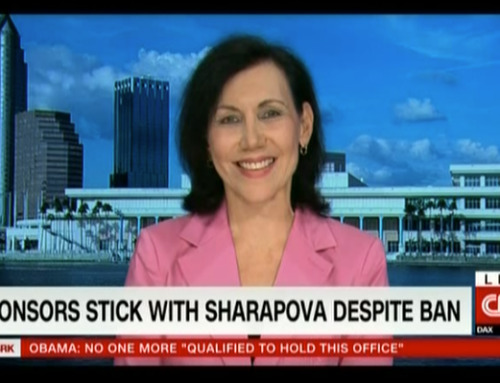In January, I decided to make 2010 my fittest year ever. So far, so good. I made a plan, stuck to it and have seen results. I have been hitting the gym, running, logging one hundred plus miles on my bike every week and I have been participating in road races. I will be thinking about goals for 2011 soon. A scenario that played out during my fitness quest made me think about marketing planning for the coming year.
I recently won a $100 gift certificate to a local merchant who sponsored one of the events I’d entered. I had frequented this establishment once or twice, but, I was loyal to a competitor. I was looking forward to picking up some new workout gear and, perhaps, being convinced to change my loyalty. If I had a good buying experience, I might have been swayed since this store is walking distance from my house and my “favorite” store is a twenty minute drive. Here’s what happened.
I walked into the store and started to browse. An employee, or was it the owner? approached and asked if I needed any help. I smiled and said, “no thanks. I am just looking. I came by to use the $100 certificate I won in the raffle at the race that you sponsored!” He looked at me with an expression of disdain, groaned and went back to another part of the store.
Did I feel compelled to spend more than the $100? No. Did I feel welcomed? No. Did I want to grab a bunch of stuff and leave as quickly as possible and tell a bunch of people how obnoxious I though the salespeople were? Yes.
I collected my $97 worth of merchandise, checked out and left wondering why they bothered to offer the gift certificate. Clearly, they did not want to gain a new customer, or they would have acted like it once they got the new customer in the door. Perhaps they hoped that most would not be cashed in since the bulk of participants for this race came from out of town, but they would get some name recognition as a sponsor? Only they know.
Anyone who is in business would always like more customers, and there are lots of ways to achieve that goal. The last quarter of the year is usually the time when we review how we did this year and start thinking about our marketing plan for next year. While you are putting together your strategies and tactics, ask yourself the following questions.
1. Do I really know my brand? If you were to describe your brand to a complete stranger, would you be able to express the core of your business in a sentence? Would it be memorable and unique or would it sound like you were describing one of your competitors? You need to have a laser focused, crystal clear vision of your brand before you can engage in any marketing activity.
2. Do I know my customers? Do you have a good customer database? Do you know who your best customers are and why they decide to buy from you? Do you know their buying habits? Do you know enough about them to be able to provide them with a solution to a problem before they come to you with it? The only way to build deep relationships and a solid repeat customer base is to be able to have answers to these questions.
3. Do I know what I am selling? This is similar to your overarching brand strategy, but specifically, what are you offering to the market place. Do you know the practical, as well as emotional benefits of your product or service?
4. Do I know what my customers are buying? Similar to the preceding question. Do you know both the practical and emotional benefits your customers are seeking? Are they aligned, or is there a gap? Make sure that they are one in the same before you start any marketing communications. This will require some customer research which you can conduct on your own. You can have conversations with your customers, you can use free polling software on your website or you can start a discussion on your blog or your Facebook page. You can also monitor conversations on line, search Twitter and find out what people are saying. Be creative in your data collection. Also, be transparent. People will be willing to talk to you if you tell them why you are seeking information.
5. Do I know my customers buying habits? Where do they interact with your company? At a store? At your store? Online? You need to know the where they are and how they buy in order to get the most impact from your marketing efforts.
6. Do I know who my competition is? Once you know thyself, you need to be aware of all the other firms that will be vying for your customers’ attention and dollars. You should be aware of their market positioning and marketing and sales strategies, as well as how they are perceived in the marketplace. Knowing this will help you differentiate yourself. See number 1.
7. Am I aware of my growth? Are you keeping tabs on things such as sales and market share so that you can measure results? You can’t measure that which you don’t track. It doesn’t require sophisticated software. You can build a simple excel worksheet and keep track of a few metrics. If you have a website, Google Analytics has a heap of free tools that you can use to track traffic, referrals, time spent by visitors, and which pages are the most captivating.
8. Do all of my employees know what our brand is? You can do all the brilliant marketing in the world, but if one of your touchpoints is off, you’ve lost credibility. Marketing may be a department, but everyone in the organization needs to know, live and breathe the brand.
9. What are my goals for marketing dollars spent? As in the example I cited above, the sporting goods shop might not have thought through their promotion. Did they just want their name on an event? Were they interested in new customers? They got a new customer in the store, but they certainly didn’t retain them. They should have had some sort of informal plan as to how to treat that new customer, or any new customer. Essentially, it all goes back to branding. If that company had made customer service a core brand value, I would likely still be shopping there. Do you know the difference between actions that will cause a splash or temporary spike versus those that will create customer retention and loyalty?
10. Do I know what it costs to get a new customer? To retain an old one? Every marketing text book will tell you that it is cheaper to retain customers than to get new ones. Do you know the costs? Do you do things to retain the group that is cheaper to keep? There are some banks and other businesses that offer discounted rates to new customers. As an established customer, those kinds of tactics irk me since all I seem to get are mystery charges every month that I have to spend time on the phone getting resolved and removed from my bill.
11. Have I kept track of what works? Looking back over the year(s), do you know what has worked? Do you know what has been a real stink bomb. Can you build off successful tactics in the past while developing new, creative strategies?
12. Am I willing to take some risks? That answer has to be yes. Carve out part of your marketing budget and your brain space to allow yourself to try something new and different. The only thing you are allowed to do if it doesn’t work is say, “that didn’t work, we won’t do that again, but we will take another risk.”
If you need help nailing down #1 on this list, you might find the Differentiate Your Product or Service Ta-Do List helpful. http://tools.oddpodz.com/ebooks-and-downloadable-tools/ta-do-lists/differentiate-your-business-product-or-services/





